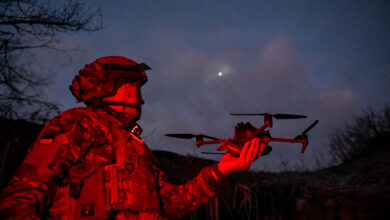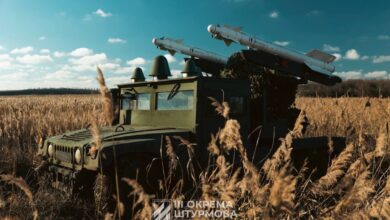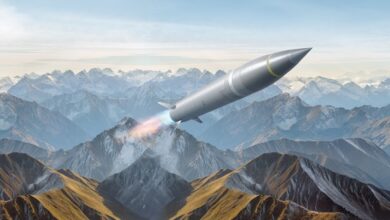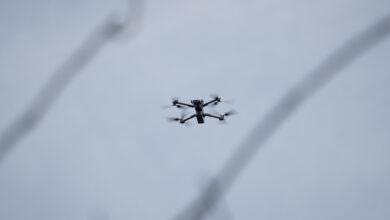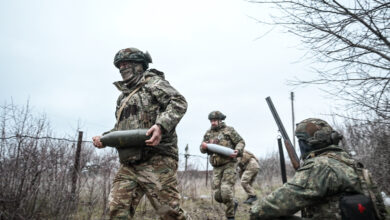
When last year’s vaunted Ukrainian summer counteroffensive bogged down, it allowed Vladimir Putin‘s Russia to switch to a war of attrition, which favors the Russian advantage in men and material.
If the United States wants to assist Ukraine offset this dilemma, we should help them think outside the box by working with Kyiv’s forces to develop asymmetrical approaches that will conserve Ukrainian lives while better targeting Russian forces as they mass.
There is a relatively inexpensive and effective way to do it.
The US has the technology to implement it, but military leaders have not felt the need for it due to our overwhelming superiority in air and fire power. Reformers such as Navy Captain Jerry Hendrix have urged the Pentagon for years to leverage artificial intelligence and other emerging technologies to create cheaper approaches to replace some of the more expensive manned systems.
Although the Pentagon has been slow to grasp this concept, the Ukrainians seem to be adopting it out of necessity by building things like “garage drones.”
Reconnaissance, Surveillance, and Target Acquisition
In the late 1990s, the Marine Corps experimented with a theoretical concept called the Reconnaissance, Surveillance, and Target Acquisition (RSTA) Grid. Although the concept included the potential use of unmanned aircraft, there was a realization that drones can be spoofed by camouflage and other deceptive means.
We realized that we needed eyes on the ground — and lots of them. The theory was to flood the battle space with hundreds if not thousands of autonomous small-micro robotic sensors, which would have the ability to watch an area of interest and send a visual signal to human operators. We also postulated that the robots could laser-designate targets.
However, the system was not designed purely as a target designation system. As the name implies, it was designed to aid maneuver warfare by identifying surfaces and gaps in enemy defenses to expedite the kind of maneuver approach we wanted to wage.

Technological Advancements
The basic concept was to insert the robots by air into key road intersections, bridges, choke points, and tunnels. The system was designed to be decentralized enough to be accessed by maneuver units down to the company level as well as to the overall commander who would manage fire support and coordination.
We envisioned the robots being mobile enough to move into hiding positions and camouflaged to fit in with their surroundings. We did not have the technology to implement it then, but we believed that we would by 2020.
War games and force-on-force field experiments convinced us the concept was sound. Because of the immature technology, we had to use surrogates to replicate the sensors that we did not yet have.
Those requisite technologies now exist. Today’s smartphones contain the capabilities we were looking for then. The RSTA robot would essentially be a self-mobile smartphone. Once a production line is started, an entire RSTA Grid constellation could be produced for less than the cost of a Patriot missile.
The RSTA Grid concept was designed to facilitate offensive maneuver ashore as part of the Marine Corps’ Operational Maneuver From the Sea (OMFTS) concept, but it would work equally well in facilitating defensive operations in Ukraine.
It could identify Russian build-ups not only to break them up with fire but also to find gaps that could be used to launch counter-offensives.

Experiments
Two of the force-on-force experiments that we conducted in the 1990s were potentially informative to the situation in Ukraine. In the first, the Blue Force, simulating a mobile armored battalion, was tasked with defending a 100-mile (62-kilometer) front along the North and Middle Neck peninsulas in Northern Virginia. We used what would now be called a meshed civil-military sensor net in that we included local civilians in the RSTA Grid.
The Ukrainians today are doing something like it. Wanted posters picturing enemy light armored vehicles were posted in the region with a 911-like number to call. The Red Force was of similar size and composition, but the meshed civilian-surrogate RSTA Grid system picked it up early and gave the Blue Force the ability to maneuver into position and conduct a decisive ambush.
The second experiment with Ukrainian implications involved a simulated Scud hunt in which a mock-up missile launcher attempted to travel from the Harper’s Ferry area to the I-95 line in Virginia.
The surrogate RSTA Grid picked it up fairly early and tracked it to the I-95 corridor. In this experiment, no surrogate overhead drones were used. This was primarily a targeting exercise, but the concept would likely be useful in assisting the Ukrainians in deep battle operations against Russian launchers even if Moscow’s troops can spoof overhead assets.
Operational Environment in Ukraine
The Marines stopped concentrating on OMFTS after 9/11 led us into Iraq and Afghanistan. The Marines are unlikely to pursue the RSTA Grid because, now that those wars are behind us, they have adopted a defensive, maritime doctrine based on anti-ship missiles.
However, the operational environment in Ukraine would give Kyiv a valuable new tool at a very reasonable cost.
The Russians could, of course, develop a similar capability; the technology is not rocket science. But their top-down command and control system would probably not allow them to use it to its full potential.
The Ukrainians are much more apt to make use of the RSTA Grid in the decentralized manner for which it was intended and in which the Marine Corps previously excelled: they are innovative and might find ways to use the system in ways we never envisioned.
 Gary Anderson served as the Chief of Plans (G-5) of the Marine Corps Expeditionary Force responsible for the Indo-Pacific area.
Gary Anderson served as the Chief of Plans (G-5) of the Marine Corps Expeditionary Force responsible for the Indo-Pacific area.
He lectures on Alternative Analysis at the George Washington University’s Elliott School of International Affairs.
The views and opinions expressed here are those of the author and do not necessarily reflect the editorial position of The Defense Post.
The Defense Post aims to publish a wide range of high-quality opinion and analysis from a diverse array of people – do you want to send us yours? Click here to submit an op-ed.


